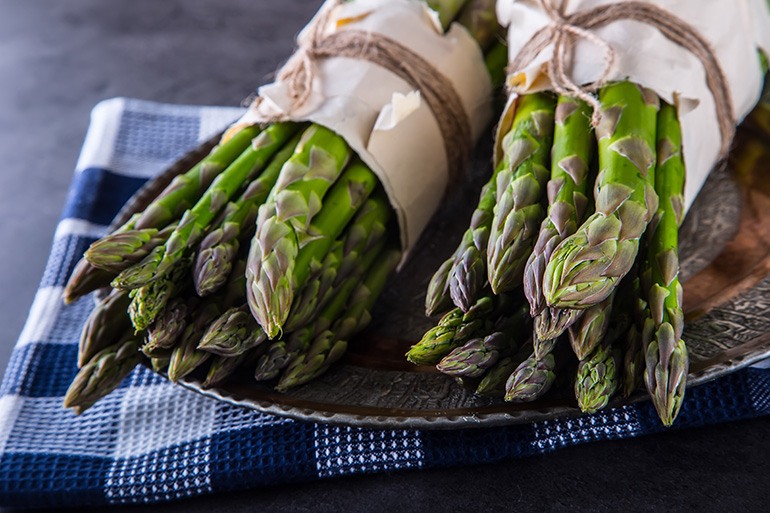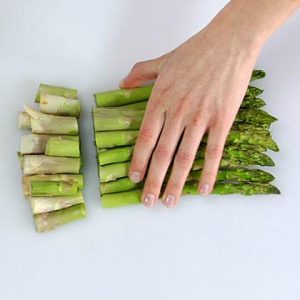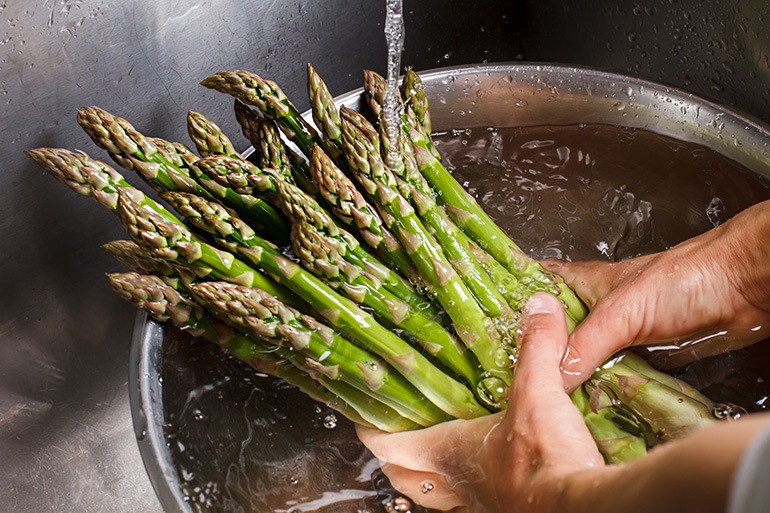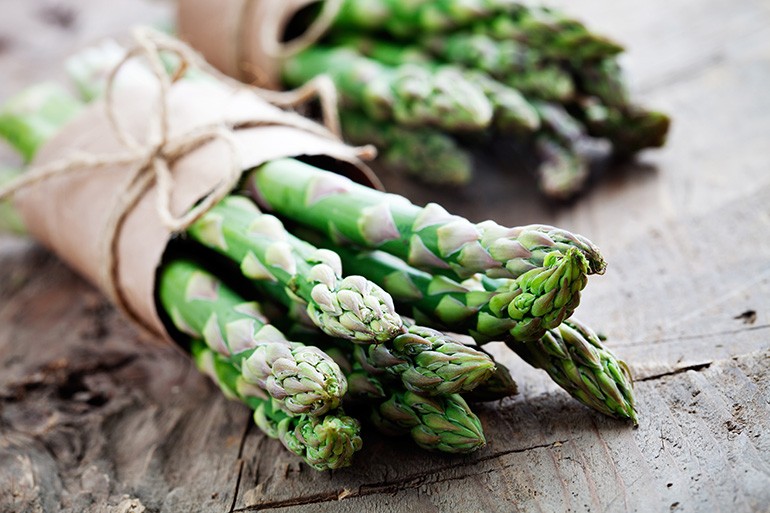Do you love asparagus? I do too! Too bad this nutritious and delicious vegetable is not available all year round though. As you may already know, asparagus is in season from February to June only, peaking during April. So, what are you going to do from July to January?
If you are trying to find a way to enjoy this vegetable all year long, I can help you with that. One of the best ways to make sure that you can enjoy asparagus even it is no longer in season is to store it properly, and the best way to do that is to freeze it.
But what is the proper way to do that? Since you are a fellow asparagus lover, I am going to share my secrets with you. Below are some information on how to freeze asparagus.
Quick Navigation
What You Will Need
- Large Cooking Pot.
- Steamer basket or blancher.
- Kitchen Tongs.
- Sealable Freezer Containers.
How to Freeze Asparagus – A Step-by-step Guide

Here are the steps you need to take to freeze asparagus properly and enjoy its nutritional benefits anytime.
Step 1. Choose the freshest asparagus.
As mentioned above, asparagus is at its peak during months between February and June, so it is wise to freeze asparagus at that time. In addition to that, you should also look for the freshest asparagus in the market.
Pro Tip:
- When looking for fresh asparagus, opt for one that has a thick, firm and crunchy spear.
- It is also recommended that you buy from farmer’s market because they sell a much fresher produce as compared to supermarkets.
Step 2. Prepare the asparagus.


Once you have chosen the freshest asparagus, let us prepare it for freezing. The first thing that you need to do is to wash it by running it under cold water. Ensure that the asparagus no longer contains dirt, grime or any other impurities before you proceed on the next step.
The next step is to trim it. Remove the bottom third of the asparagus as this part tends to be a bit tough and woody. You can use a knife or your fingers to break this part of the spear.
Step 3. Freeze asparagus.
The freezing method that you will use will depend on the type of asparagus that you will store—blanched or fresh.
Method #1: Vacuum Seal
This method is best for storing raw asparagus because the vacuum seal can help preserve the flavor and texture of the vegetable. Since the bags provide an air tight seal, you can directly flash freeze the veggies without any need for blanching, ensuring that the vegetable is at its freshest state.
Step 1. Place the asparagus spears in the bag.
Pro Tip:
Try to arrange them in a way that they all point to the same direction to achieve an air-tight seal.Step 2. Place the open side of the bag on the sealer. Make sure that the edges are all lined up properly. Start the sealer.
Pro Tip:
You can use your hands to facilitate the removal of excess air in the bag during this step.Step 3. Once the sealer has stopped, release the suction and open. Observe if there is air seeping back into the bag. If there is, repeat the resealing process.
Step 4. Label the bag along with the date of storage for future reference. Place the bag in the freezer.
Method #2: Traditional Freezing Process
This is the freezing method of choice if you want to blanch your asparagus before storing it. Many people opt to blanch their asparagus because this process helps to destroy the enzymes that bacteria that break down the nutrients and change the color, texture, and flavor of asparagus.
Step 1. Place asparagus spears in a blancher and submerge the blancher in boiling water. Put a lid on the blancher.
Step 2. Blanch the asparagus for a few minutes. The blanching time may depend on the size of your spears—small spears (2 minutes), medium spears (3 minutes) and large spears (4 minutes). The heat must be kept on high for the whole blanching duration.
Pro Tip:
After you have lowered the blancher in the boiling water, the water will stop boiling for a while but it will start to boil after a minute or so. You should begin counting blanching time when the water starts to boil again.Step 3. After blanching, cool the asparagus right away to prevent overcooking. You can do this by submerging the asparagus spears in ice-cold water for the same amount of time that the spears have been blanched.

Step 4. Arrange the spears properly on sealed freezer containers.
Pro Tip:
Top off the spears with a bit of water before sealing. Doing so can protect the spears from the frigid air.Step 5. Label containers with date of storage and place them in the freezer.
Final Thoughts
Asparagus is one of the most versatile and nutritious vegetables that we have today but sadly, this vegetable is not available for the entire year. The best thing that you can do to make sure that you can enjoy fresh asparagus all year round is to freeze it.
We have provided the information that you need on how to freeze asparagus properly. When you follow these steps and tips, you can keep the vegetable in storage for 8-12 months, allowing you to use it in between seasons.
Did you enjoy our simple tutorial? I hope I have helped you discover the best way to enjoy the freshness of asparagus for long. If you have found this useful, please do share it with our fellow asparagus lovers!


0 comments
You’ve got it in one. Cond’ult have put it better.